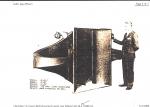Make your own Aqualuas ???, I am pleased you asked, LE15-Thumper. Early 1970's I tried to buy some Aquaplas to no avail & the Aquaplas vendor or manufacturer had a 50 gallon barrel minimum. Michael Pearce in Cal, wanted $56.00 for a small pail of the stuff. I was able to buy a 5 gallon bucket at some $30.00 from the local "Sound Coat inc.," Acoustics Products vendor; none of which i have yet to use.
But i can tell you this. "The Aquaplas appears to be a mixture of "tung oil," & maybe a little varnish and some kind of a clay body. I think the worse that can happen to the tung oil is that it may oxidize in curring, which i think is required anyway to stabilize. I have used tung oil on my wood floors since 1950 and it is extremely flexible, durable and tough.
You may find it interesting to experiment with the ingredients mentioned. One question I have pondered Aka: I have seen, & so have other people, any number of Altec 500 series horns with a 1/2 inch coat of what i have been told is Aquaplas, which has cured hard as stone. In all fairness to jBL, I have seen no proof this coating on these horns is indeed Aquaplas, & if it is Aquaplas, it may well be that a very thin, cured coat is mechanically resistive to bending & does function perfectly well and stabile as excellent damping on a speaker cone or diaphragm.
Chears herki the cat






 Reply With Quote
Reply With Quote





